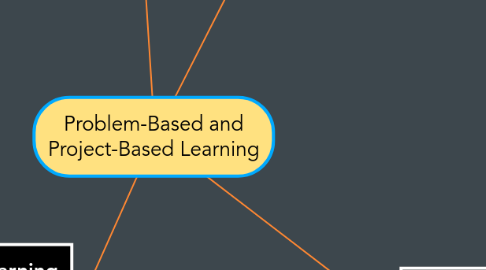
1. Project-Based Learning
1.1. Meaning
1.1.1. Project Based Learning (PBL) is a teaching method in which students learn by actively engaging in real-world and personally meaningful projects.
1.2. Outcomes
1.2.1. Case-specific understanding practical products
1.3. Main Activity
1.3.1. Producing applicable results
1.4. Organizing Principle
1.4.1. Project manangement
1.5. Self-directed learning
1.5.1. Student-centered within pre-defined project frame
1.6. Elements
1.6.1. 1. Challenging Problem or Question
1.6.2. 2. Sustained Inquiry
1.6.3. 3. Authenticity
1.6.4. 4. Student Voice and Choice
1.6.5. 5. Reflection
1.6.6. 6. Critique and Revision
1.6.7. 7. Public Product1
1.7. Operational Structure
1.7.1. 1. Professional Knowledge
1.7.2. 2. Project Design
1.7.2.1. Cultivated he ability to design and carry out
1.7.2.2. Cultivated team cooperative skills
1.7.2.3. Acquire professional knowledge
1.7.3. 3. Learning knowledge and reasoning
1.7.3.1. Use of team creative skills
1.7.3.2. Resource-based learning
1.7.3.3. Supervise and support each other
1.7.4. 4. Evaluation
1.7.4.1. Solve problems
1.7.4.2. Acquire knowledge
1.7.4.3. Creativity on work
1.7.4.4. Social skills
2. Differences
2.1. Problem-based Learning
2.1.1. More often single subject, but can be multiple subject
2.1.2. Tend to ba shorter, but can be lengthy
2.1.3. Classically follows specific, traditionally prescribed steps
2.1.4. The "product" may be tangible or a proposed solution, expressed in writing or presentation
2.1.5. Often uses case studies or fictitious scenarios as "ill-structured problems"
2.2. Project-based Learning
2.2.1. Often multiple subject
2.2.2. Maybe lengthy,(weeks or months)
2.2.3. Follows general, variously named steps
2.2.4. May use scenarios but often involves real world , fully authentic task and settings.
3. Daisyree R. Zambrano III-D MATHEMATICS
4. Problem-Based Learning
4.1. Meaning
4.1.1. Problem-Based Learning (PBL) is a teaching method in which complex real-world problems are used as the vehicle to promote student learning of concepts and principles as opposed to direct presentation of facts and concepts.
4.2. Outcomes
4.2.1. Deeper understanding; theory building
4.3. Main Activity
4.3.1. Inquiry of Pronlematic Inquiries
4.4. Organizing principle
4.4.1. Learning tutorial
4.5. Self-directed learning
4.5.1. Fully student-centered on loosely pre-defined setting
4.6. Operational Structure
4.6.1. 1. Professional Knowledge
4.6.2. 2. Situated Design
4.6.2.1. Cultivate the ability to design question
4.6.2.2. Cultivated team cooperative skills
4.6.3. Elements
4.6.3.1. 2. Authentic Assessment
4.6.3.1.1. 1. Authentic Problems
4.6.3.2. 3. Culturally revlevant and responsive pedagogy
4.6.3.3. 4. Expertise
4.6.3.4. 5. Collaboration
4.6.3.4.1. Aquire professional knowledge
4.6.3.5. 6. Academic discourse
4.6.3.6. 7. Student voice and leadership
4.6.4. 3. Learning nd Knowledge Reasoning
4.6.4.1. Use of creative skills
4.6.4.2. Resourse-based learning
4.6.4.3. Supervise and support each other
4.6.5. 4. Evaluation
4.6.5.1. Acquire Knowledge
4.6.5.2. Creativity on works
4.6.5.3. Social skills
4.6.5.4. Solve Problems
